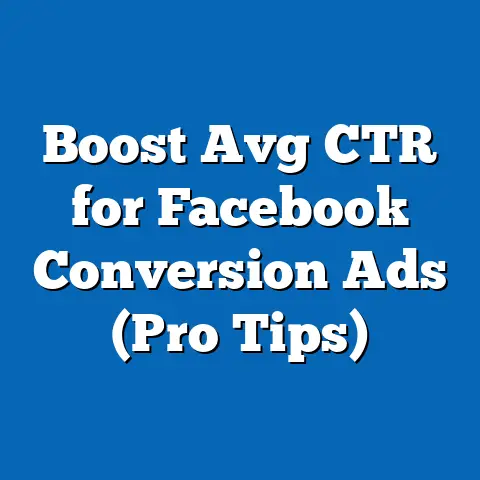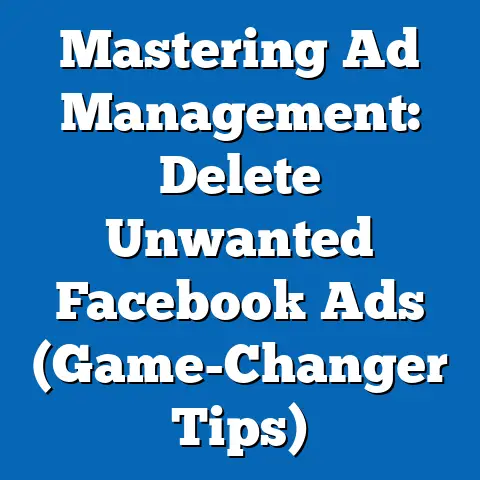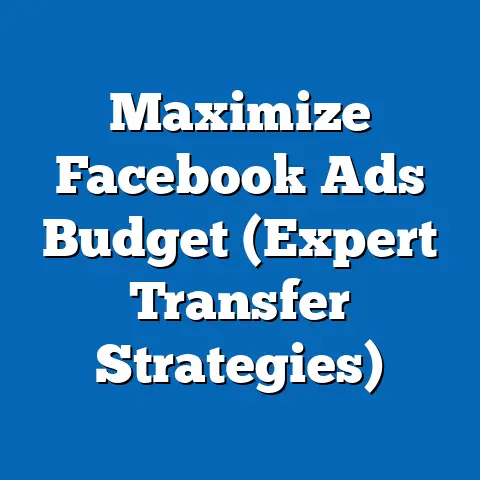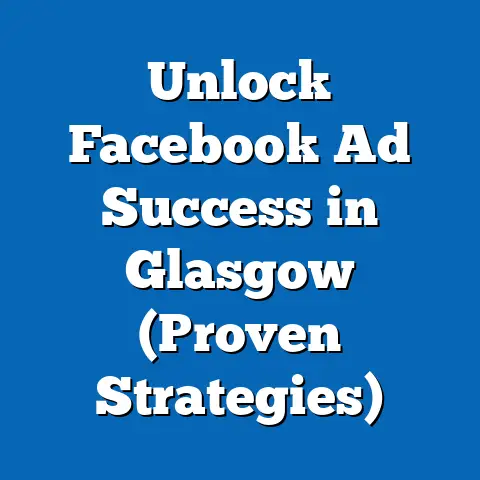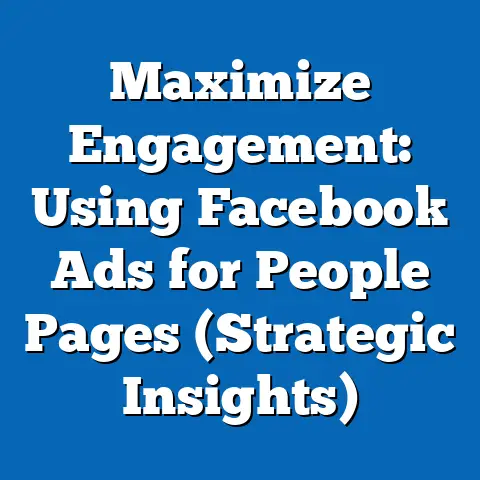Target Amazon Customers via Facebook Ads (Proven Strategies)
Target Amazon Customers via Facebook Ads: Proven Strategies
Isn’t it funny how you can be mindlessly scrolling through Facebook, only to find an ad for that quirky kitchen gadget you just added to your Amazon cart but didn’t buy? It’s almost as though Facebook has a direct line to your browsing history! I’ve had this happen to me countless times, and it always makes me chuckle. It’s a testament to how sophisticated ad targeting has become.
This seemingly magical connection isn’t magic at all; it’s the result of strategic advertising techniques that leverage the power of data and targeted marketing. In this article, I’m going to delve into the world of Facebook ads and explore how you can effectively target Amazon customers to boost your sales.
Amazon customers are a unique breed. They’re often ready to buy, they’re accustomed to researching products, and they trust the Amazon platform. This makes them a valuable target for advertisers looking to drive conversions. The key is to understand their needs, their shopping habits, and their online behavior. I’ll share proven strategies to reach and engage this audience, turning those casual browsers into loyal customers. Let’s dive in!
Understanding the Amazon Customer
The “typical” Amazon customer is a diverse bunch, but certain traits and behaviors tend to be common. In my experience, successful Facebook advertising starts with a deep understanding of who you’re trying to reach.
Demographics: Amazon attracts a broad demographic, ranging from young adults to seniors. However, the platform’s core users tend to be tech-savvy millennials and Gen Xers who appreciate the convenience of online shopping. They often have disposable income and are willing to spend on products that enhance their lifestyle.
Shopping Behavior: Amazon customers are frequent shoppers. They visit the site regularly to browse, compare prices, and read reviews. They’re also accustomed to fast shipping and easy returns, which influences their purchasing decisions. Many are Prime members, which means they’re more likely to make repeat purchases.
Preferences: Amazon customers value convenience, price, and product variety. They often seek out deals and discounts, and they rely heavily on customer reviews to make informed decisions. They also appreciate personalized recommendations and are more likely to purchase products that align with their interests and needs.
The Amazon Customer Mindset: One of the key things I’ve learned is that Amazon customers are often in a “buying” mindset. They’re not just browsing; they’re actively looking for products to purchase. They’re often seeking deals, comparing prices, and looking for instant gratification. They want the best product at the best price, and they want it delivered quickly.
Deals and Discounts: Amazon customers are savvy shoppers. They’re always on the lookout for deals and discounts. They often use coupon codes, subscribe to newsletters, and participate in promotions to save money.
Product Reviews: Amazon customers rely heavily on product reviews to make informed decisions. They read reviews carefully, paying attention to both positive and negative feedback. They also look for verified purchases and reviews from other customers with similar needs and preferences.
Instant Gratification: Amazon customers want instant gratification. They expect fast shipping, easy returns, and excellent customer service. They’re willing to pay a premium for these benefits, which is why so many are Prime members.
The Importance of Understanding This Audience: Understanding the Amazon customer is crucial for crafting effective Facebook ads that resonate with their needs. By tailoring your ad copy, visuals, and targeting to their preferences, you can increase your chances of driving traffic to your Amazon listings and boosting your sales. It’s about speaking their language and showing them you understand their needs.
Key Takeaway: The Amazon customer is a savvy, frequent shopper who values convenience, price, and product variety. Understanding their mindset and preferences is crucial for crafting effective Facebook ads that resonate with their needs.
Facebook Ads Fundamentals
Before diving into specific strategies for targeting Amazon customers, it’s essential to have a solid understanding of Facebook Ads fundamentals. I’ve seen many campaigns fail simply because the basics weren’t properly understood.
Overview of Facebook Ads: Facebook Ads is a powerful advertising platform that allows you to reach a vast audience with highly targeted ads. It offers a variety of ad formats, targeting options, and campaign objectives to help you achieve your business goals.
Different Ad Formats: Facebook offers a variety of ad formats, each with its own strengths and weaknesses. Here are some of the most popular:
- Carousel Ads: These ads allow you to showcase multiple products or features in a single ad. They’re great for highlighting a range of products or telling a story.
- Video Ads: Video ads are highly engaging and can be used to capture attention and convey complex information. They’re great for showcasing product demos, customer testimonials, or brand stories.
- Image Ads: These ads are simple and effective. They’re great for showcasing a single product or promoting a specific offer.
- Stories Ads: These ads appear in the Stories section of Facebook and Instagram. They’re great for reaching a younger audience and promoting time-sensitive offers.
Targeting Capabilities: Facebook’s targeting capabilities are incredibly powerful. You can target users based on their demographics, interests, behaviors, and more. Here are some of the most important targeting options:
- Custom Audiences: Custom Audiences allow you to target users who have already interacted with your business, such as website visitors, email subscribers, or customers.
- Lookalike Audiences: Lookalike Audiences allow you to target users who are similar to your existing customers. This is a great way to expand your reach and find new customers who are likely to be interested in your products.
- Interest Targeting: Interest Targeting allows you to target users based on their interests and hobbies. This is a great way to reach a broad audience with relevant ads.
Aligning Facebook Ad Objectives with Business Goals: It’s crucial to align your Facebook ad objectives with your business goals. Are you trying to drive traffic to your Amazon listings? Increase sales? Build brand awareness? Your ad objectives should reflect these goals.
- Driving Traffic to Amazon Listings: If your goal is to drive traffic to your Amazon listings, you should choose the “Traffic” objective. This will optimize your ads for clicks and website visits.
- Increasing Sales: If your goal is to increase sales, you should choose the “Conversions” objective. This will optimize your ads for purchases and other valuable actions.
- Building Brand Awareness: If your goal is to build brand awareness, you should choose the “Brand Awareness” or “Reach” objective. This will optimize your ads for impressions and reach.
Key Takeaway: Facebook Ads offers a variety of ad formats, targeting options, and campaign objectives. It’s crucial to understand these fundamentals to create effective campaigns that align with your business goals.
Proven Strategies for Targeting Amazon Customers
Now that we’ve covered the basics, let’s dive into some proven strategies for targeting Amazon customers through Facebook ads. I’ve personally used these strategies with great success, and I’m excited to share them with you.
Strategy 1: Retargeting Ads
Retargeting ads are one of the most effective ways to target Amazon customers. These ads target users who have visited your Amazon listings but didn’t complete a purchase.
How to Set Up Retargeting Campaigns: 1. Install the Facebook Pixel: The first step is to install the Facebook Pixel on your website. This will allow you to track website visitors and create custom audiences based on their behavior. 2. Create a Custom Audience: Create a custom audience of users who have visited your Amazon listings. You can do this by specifying the URLs of your Amazon listings in the custom audience settings. 3. Create a Retargeting Ad: Create a retargeting ad that targets your custom audience. In the ad copy, remind users of the products they showed interest in and offer a compelling reason to purchase, such as a discount or free shipping.
Tips for Crafting Compelling Ad Copy and Visuals:
- Use High-Quality Images: Use high-quality images of your products that showcase their best features.
- Highlight Key Benefits: Highlight the key benefits of your products in the ad copy. What problems do they solve? What makes them unique?
- Offer a Discount or Promotion: Offer a discount or promotion to incentivize users to purchase.
- Use a Strong Call to Action: Use a strong call to action, such as “Shop Now” or “Buy Today.”
Strategy 2: Lookalike Audiences
Lookalike audiences are another powerful way to target Amazon customers. These audiences target users who are similar to your existing customers.
How to Leverage Existing Customer Data: 1. Upload Your Customer List: Upload your customer list to Facebook. This can include email addresses, phone numbers, or other identifying information. 2. Create a Lookalike Audience: Create a lookalike audience based on your customer list. Facebook will analyze your customer data and identify users who share similar demographics, interests, and behaviors. 3. Target Your Lookalike Audience: Target your lookalike audience with ads that promote your Amazon listings.
Step-by-Step Guidance on Creating Lookalike Audiences:
- Go to Facebook Ads Manager: Log in to Facebook Ads Manager and navigate to the “Audiences” section.
- Create a New Audience: Click on “Create Audience” and select “Lookalike Audience.”
- Select Your Source: Choose your customer list as the source for your lookalike audience.
- Choose Your Audience Size: Choose the size of your lookalike audience. A smaller audience will be more similar to your existing customers, while a larger audience will be less similar but will have a wider reach.
- Create Your Audience: Click on “Create Audience” to create your lookalike audience.
Type of Data That Works Best:
- High-Quality Customer Data: The more accurate and complete your customer data, the better your lookalike audience will be.
- Recent Customer Data: Recent customer data is more valuable than older data.
- Data from High-Value Customers: Data from your high-value customers is more valuable than data from your low-value customers.
Strategy 3: Interest-Based Targeting
Interest-based targeting allows you to target users based on their interests and hobbies. This is a great way to reach a broad audience with relevant ads.
How to Target Users Based on Their Interests: 1. Identify Relevant Interests: Identify interests that are relevant to your products. For example, if you sell kitchen gadgets, you might target users who are interested in cooking, baking, or home decor. 2. Create an Ad Set: Create an ad set that targets users who have expressed interest in these topics. 3. Promote Your Amazon Listings: Promote your Amazon listings in your ads.
Specific Interests or Behaviors That Correlate with Purchasing Patterns on Amazon:
- Amazon Prime Members: Target users who are Amazon Prime members.
- Frequent Online Shoppers: Target users who frequently shop online.
- Users Who Have Visited Amazon: Target users who have visited Amazon in the past.
- Users Who Have Purchased Similar Products: Target users who have purchased similar products on Amazon or other online retailers.
Strategy 4: Seasonal and Event-Based Campaigns
Seasonal and event-based campaigns allow you to capitalize on seasonal trends and events to create timely and relevant Facebook ads aimed at Amazon customers.
How to Capitalize on Seasonal Trends and Events:
- Identify Relevant Events: Identify events that are relevant to your products. For example, if you sell holiday decorations, you might target users who are interested in Christmas, Halloween, or Thanksgiving.
- Create Timely Ads: Create ads that are timely and relevant to the event. For example, you might offer a discount on holiday decorations in the weeks leading up to Christmas.
- Target Users Who Are Likely to Be Shopping for Gifts: Target users who are likely to be shopping for gifts, such as parents, grandparents, or friends.
Examples of Successful Campaigns:
- Black Friday Deals: Promote your Black Friday deals on Facebook to drive traffic to your Amazon listings.
- Holiday Gift Guides: Create holiday gift guides that feature your products and promote them on Facebook.
- Summer Sales: Promote your summer sales on Facebook to drive traffic to your Amazon listings.
Strategy 5: Engaging Content and Promotions
Creating engaging ad content that offers value is crucial for capturing the attention of Amazon customers.
The Importance of Creating Engaging Ad Content:
- Stand Out from the Crowd: Engaging ad content will help you stand out from the crowd and capture the attention of potential customers.
- Offer Value: Offer value to your audience, such as exclusive discounts or informative content related to your products.
- Build Trust: Build trust with your audience by providing valuable information and being transparent about your products.
How to Effectively Use Facebook’s Various Ad Formats:
- Carousel Ads: Use carousel ads to showcase multiple products or features in a single ad.
- Video Ads: Use video ads to showcase product demos, customer testimonials, or brand stories.
- Image Ads: Use image ads to showcase a single product or promote a specific offer.
- Stories Ads: Use stories ads to reach a younger audience and promote time-sensitive offers.
Key Takeaway: There are several proven strategies for targeting Amazon customers through Facebook ads. Retargeting ads, lookalike audiences, interest-based targeting, seasonal and event-based campaigns, and engaging content and promotions are all effective ways to reach and engage this valuable audience.
Measuring Success and Optimization
Measuring the success of your Facebook ad campaigns is crucial for optimizing your performance and maximizing your ROI. I’ve learned that you can’t improve what you don’t measure.
Key Performance Indicators (KPIs) for Measuring Success:
- Click-Through Rate (CTR): The percentage of users who click on your ad after seeing it.
- Conversion Rate: The percentage of users who complete a desired action, such as making a purchase, after clicking on your ad.
- Cost Per Click (CPC): The amount you pay each time someone clicks on your ad.
- Cost Per Acquisition (CPA): The amount you pay each time someone completes a desired action, such as making a purchase.
- Return on Ad Spend (ROAS): The amount of revenue you generate for every dollar you spend on advertising.
The Importance of A/B Testing: A/B testing is the process of testing different versions of your ads to see which performs best. This can include testing different ad copy, visuals, audience segments, and more.
How to A/B Test Different Ad Elements:
- Create Multiple Versions of Your Ad: Create multiple versions of your ad with different ad copy, visuals, or audience segments.
- Run Your Ads Simultaneously: Run your ads simultaneously to ensure that they are exposed to the same conditions.
- Track Your Results: Track your results carefully to see which ad performs best.
- Implement the Winning Version: Implement the winning version of your ad and continue to test and optimize.
The Role of Analytics Tools: Analytics tools, such as Google Analytics and Facebook Analytics, can help you track the performance of your Facebook ad campaigns and make data-driven adjustments.
Key Takeaway: Measuring the success of your Facebook ad campaigns is crucial for optimizing your performance and maximizing your ROI. Use KPIs, A/B testing, and analytics tools to track your results and make data-driven adjustments to your campaigns.
Conclusion
Targeting Amazon customers through Facebook ads can be a highly effective way to boost your sales and grow your business. By understanding the Amazon customer, leveraging Facebook Ads fundamentals, and implementing proven strategies, you can reach and engage this valuable audience.
Remember, retargeting ads, lookalike audiences, interest-based targeting, seasonal and event-based campaigns, and engaging content and promotions are all effective ways to reach and engage Amazon customers. And don’t forget to measure your success and optimize your campaigns to maximize your ROI.
I encourage you to implement these proven strategies to enhance your advertising efforts and ultimately drive more conversions. With a little effort and a strategic approach, you can unlock the potential of Facebook ads and tap into the vast market of Amazon customers. Good luck, and happy advertising!


